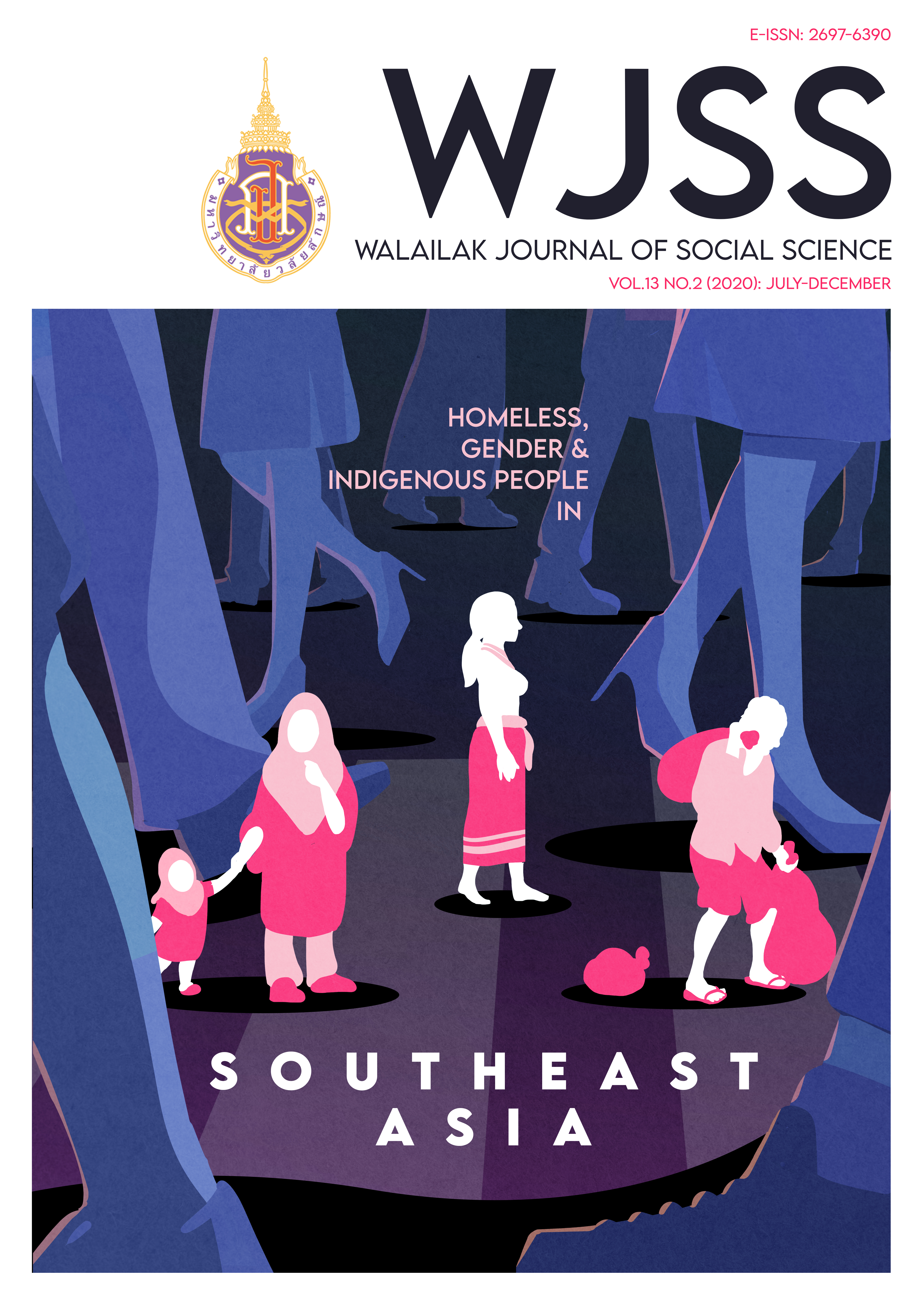The Impacts of Geographical Indication Registration on Career Sustainability of Agriculturists: Study the Case of Siam Ruby Pomelo
Main Article Content
Abstract
The research aims to study the impacts of Geographical Indication (GI) Registration on career sustainability of agriculturists in the case of Siam Ruby Pomelo (Pak Phanang) and to provide suggestions for production process development after the process of GI Registration. In practice, the study examines the effects on career sustainability of agriculturists in the community and employs the data on the impact of Geographical Indication Registration for Siam Ruby Pomelo (Pak Phanang) as a guideline for developing local processes for pomelo growers.
The results of study indicate that GI Registration and GI symbol application have effects on career sustainability of the majority of the research samples, mostly on income or financial status overall. Especially, after GI symbol application, there are more sales opportunities and channels of distributing products. Moreover, the study shows that GI symbol application plays an immense role in consumer confidence. However, no evidence shows significant disparity on the life quality, nor social life of the research samples when compared to their financial status.
Article Details
Copyright: CC BY-NC-ND 4.0
References
Chanpen, S. (2007). Study of relationship among job security, family feeling, recognition and organizational loyalty and job satisfaction case study: Craft the Best Co., Ltd. and P.T. Trading Co., Ltd. in SME leather industry. (Master’s thesis). Graduate School, Bangkok: Bangkok University.
Chongpipatanasook, W., & Hongwityakorn, U. (2018). The Analysis of Factors and Differences of Community Learning for Enhancing the Ability in Geographical Indication Management towa rds Social Entrepreneurship. .Journal of Education Studies, Chulalongkorn University, 46(3), 194-211.
Department of Intellectual Property. (2012). Announcement of the Department of Intellectual Property Regarding the Registration of Geographical Indication: Siam Ruby Pomelo Siam, Pak Phanang. Registration No.55100046 Announcement No.51 Book 13 Date March 1, 2012.
Detpiratmongkol, T. (2008). Protection of geographical indications: study on the measure of Thai law and the European Union law. (Master’s thesis). Graduate School, Bangkok: Dhurakij Pundit University.
Filhol, D. (1988). The Protection of Appellation of Origin and Indication of Source in France. Symposium on Appellation of Origin and Indications of Source, Bordeaux, France, November 3-5 1988. p.95
Hughes, K. D., Lowe, G., & Schellenberg, G. (2003). Men’s and Women’s Quality of Life in the New Canadian Economy. Retrieved from http://cprn.org/doc
Khatmat, J. (2011). The Legal Problems of the Local Wisdom Protection: A Case Study on the Protection by Geographical Act B.E 2546 and other relevant Intellectual Property Law. FEU Academic Review, 4(2), 71-80.
Kuanpoj, C., & Setsiroj, B. (2008). Legal Protection of Geographical Indications for Export Promotion and Empowering Local Communities. Bangkok: The Thailand Research Fund.
Liewwatthanakit, R. (2008). Occupational Security of Silpakorn University’s General Administrative Employyees. Bangkok: The Thailand Research Fund.
Maslow, A. H. (1943). A Theory of Human Motivation. Psychological Review, 50(4), 370-396.
Ministry of Social Development and Human Security. (2019). Human Security Strategy B.E.2556-2566. Retrieved from http://www.m-society.go.th/ewt_news.php?nid=12510
Muanpum, N. (2016). Progressing and steadiness of the part time employees in public organization. Proceeding of the 3rd National conference and research presentation 2016 (17th June, 2016). 4. No1. Nakhon Ratchasima College. pp. 145-152.
Office of the National Economic and Social Development Board. Phǣnphatthanāsētthakitlæ sangkhom Chabapthī Sipsō̜ng 2019-2021. (in Thai) [The Twelve National Economics and Social Plan]. Retrieved from https://www.nesdb.go.th/ewt_dl _link.php?nid=6422
Phonpanich, P. (2018). Development of Geographical Indication Products Model. Journal of Graduate School of Commerce-Burapha Review, 13(1), 97-112.
Pitaktepsombat, P. (2007). khwāmmāikhō̜ngkhunnaphāpchīwit in Sipsō̜ngNǣokhitthāngratprasāt sanāsāt: khwāmmāi Kānwat. in Pitaktepsombat,P (ed.). [“The meaning to life” in 12 Public Aministration Concepts: Meanings Measurement]. 6th Ed. Bangkok: samatham.
Pongsawat, S. (2010). Geographical Indications and Entrepreneur. FEU Academic Review, 4(1), 1-10.
Resource Book on TRIPs and Development. (2005). UNCTAD-ICTSD. p.270
Suktai, S. (2017). Legal Problems Related to the Protection of Rights inTrademarks and Geographical Indications. Ramkhamhaeng Law Journal, 6(1), 77-116.
Tianprasit, T. (2016). The protection of Geographical Indications in ASEAN community. NIDA Development Journal, 56(4), 11-16.
Torpanyacharn, K. (2018). Geographical Indication and Traditional Specialities Guaranteed with Local Wisdom. STOU Journal, 31(1), 36-53.
Walton, R. E. (1975). The Quality of Working Life “Criteria for Quality of Working Life.” New York: Free Press.
Wasasiri, P. (2010). Job security of independent guides during economic crisis. (Master’s thesis). Graduate School, Bangkok: Thammasat University.
Wongsangha, S. (1996). Employment Security of Department Store in Bangkok: Case Study Sales Staff (Master’s thesis). Graduate School, Samut Prakarn: Huachiew Chalermprakiet.
Yenbutra, P., & Lamlert, W. (2019). Geographical indication protection for sustainable development: a study of TRIPS agreement. The Academic Journal: Faculty of Humanities and Social Sciences, Nakhon Sawan Rajabhat University, 6(1), 242-276.


